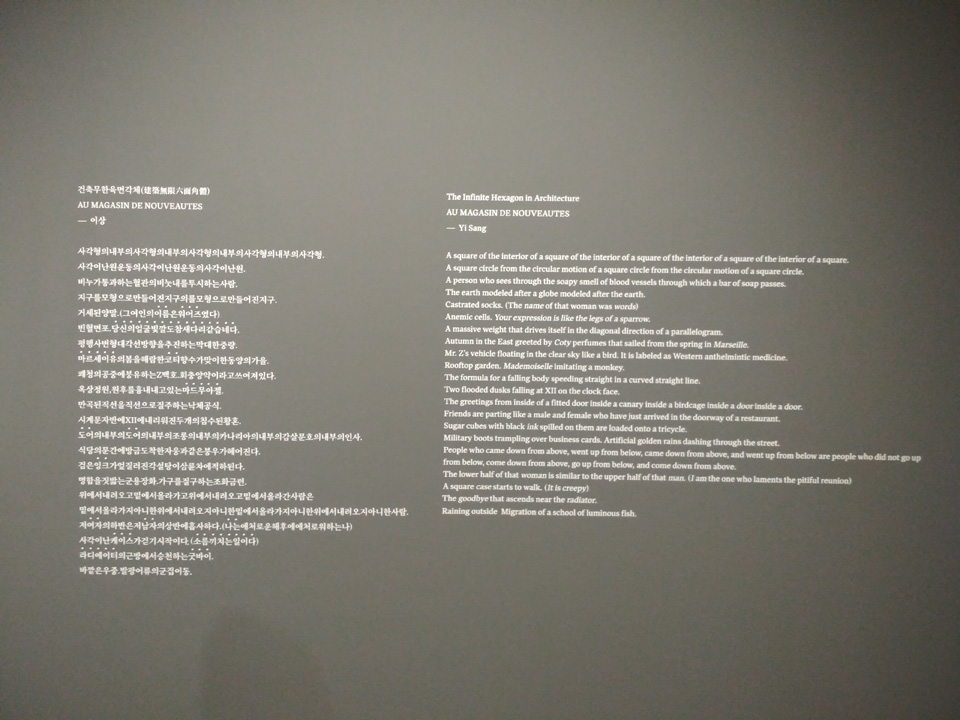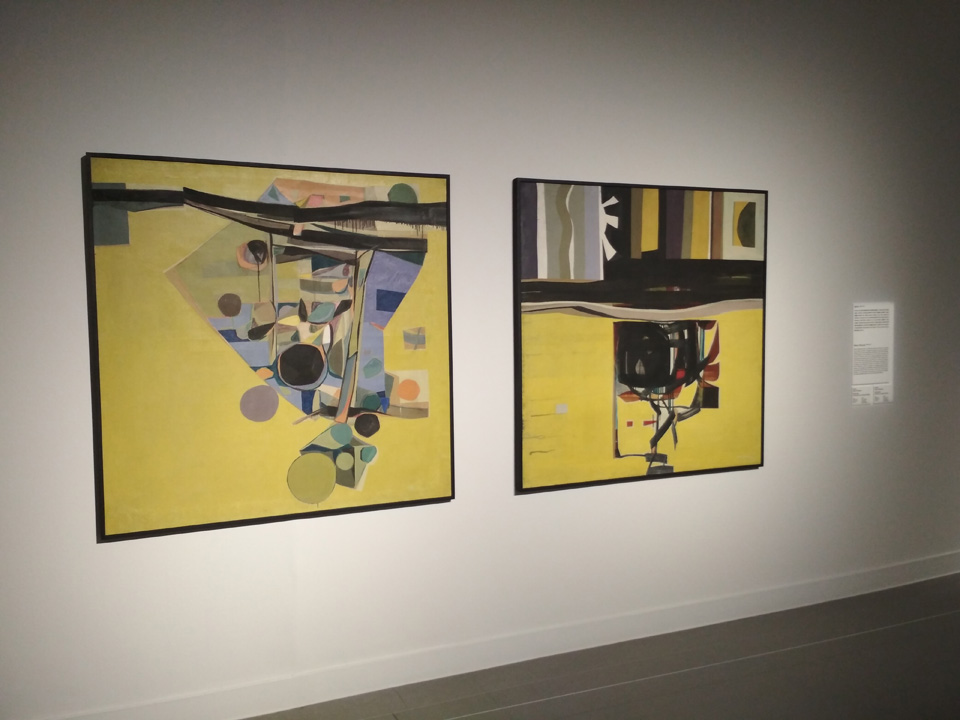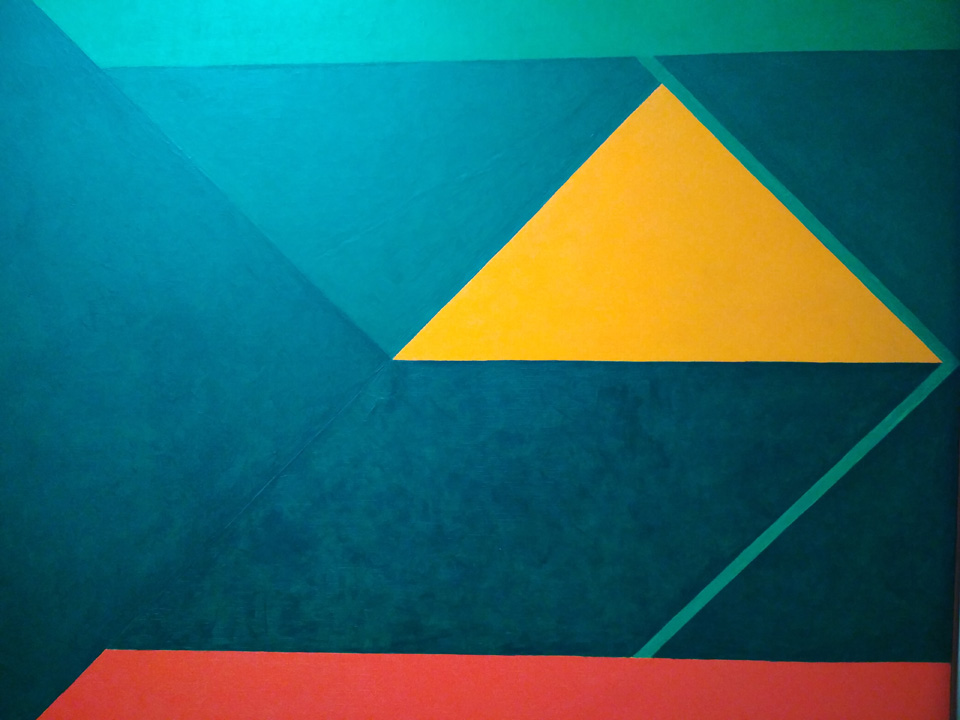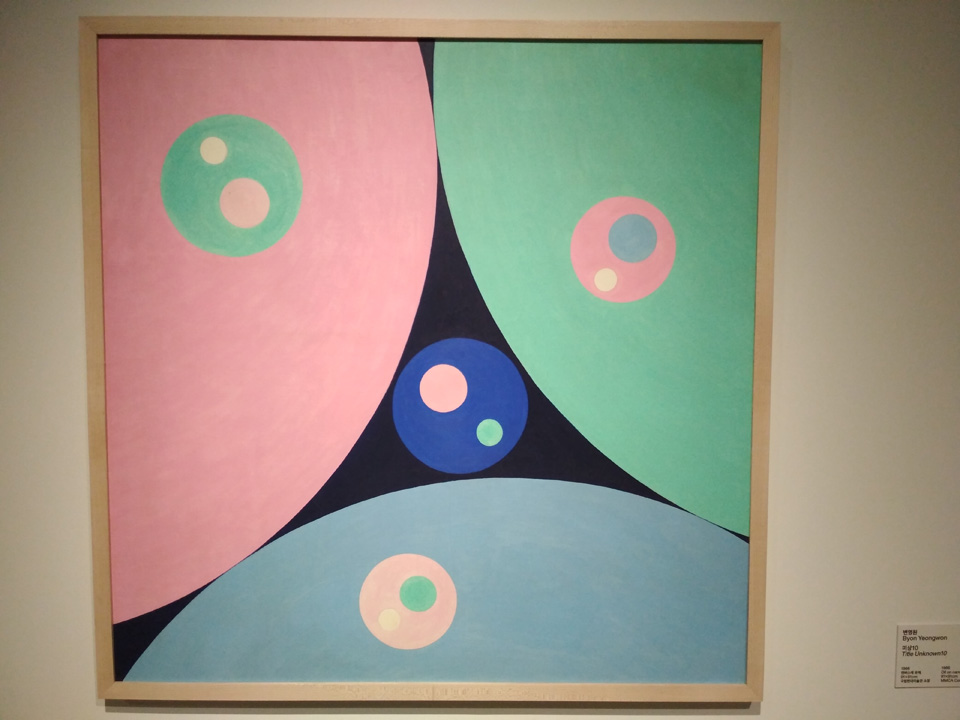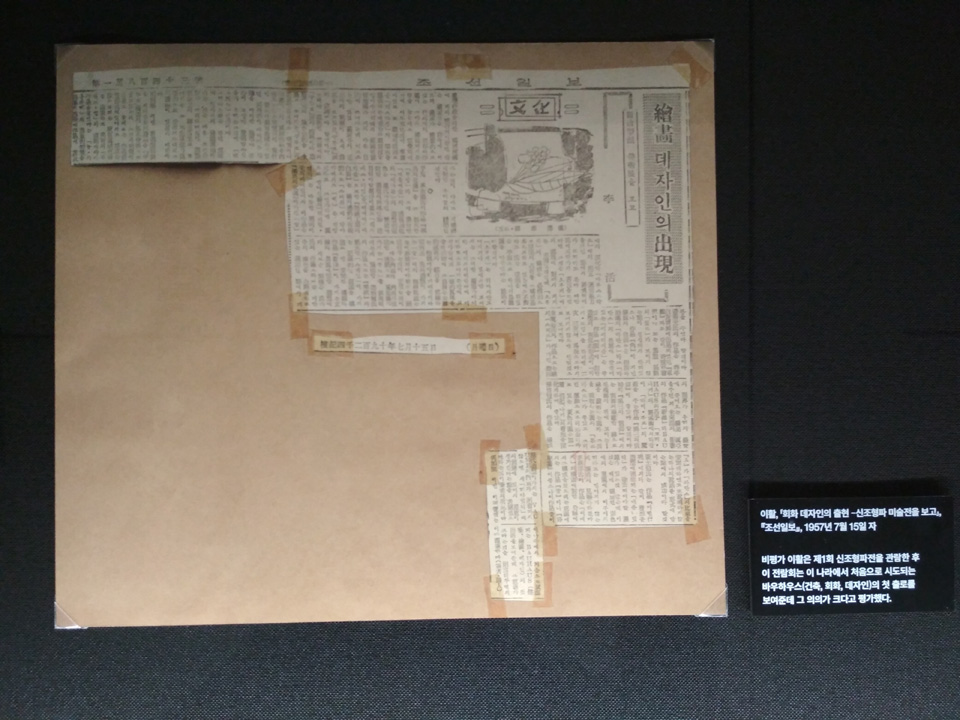Seoul, Nov 16, 2023 – May 19, 2024, https://www.mmca.go.kr
There were three shows on during my visit. All were telling different parts of a grand contemporary Korean art narrative. Korean new media master Nam June Paik’s masterpiece. Korean photography. Korean geometric abstraction. Defining a coherent historical narrative and canon of works that support it is something MMCA does often in their shows. Ultimately, it is the main Korean government-funded institution for contemporary art with the resources and power to do so.
MMCA photographs collection exhibition – a staple of well known contemporary Korean artists included in the official MMCA canon. Themes around society, historical events and urban development. The ‘new’ thing for me were two drone-art works. One high-res composite photograph of the Seoul Grand Park area including the museum building itself. Another a series of static drone video clips showing the movement of lone people in park-like man-designed natural environments. The works were presented as artworks, but technically and methodically they were indistinguishable from a cartographic survey or surveillance video. The jobs of an artist, cartographer and army drone operator merged into one. I am waiting for the follow up artwork displaying the (land) art of bomb dropping. The intermingling of the military-industrial complex and the complicity of some artists is old news at least since the existence of the internet. Drone art takes it to a new level. Thought-provoking works.
Merry Mix: The More, The Better: an exhibition about the reactivation/repair of Nam June Paik’s megalomaniac permanent installation ‘the more the better’ in the central rotunda of MMCA Gwacheon, cementing NJP position as the ultimate master of Korean video art. NJP actually reached fame in the U.S. and Europe and it was only after the fact Koreans welcomed him back to honor him. MMCA ensures the veneration continues and the old CRT monitors keep flickering. To support the exhibition of archival documents, a bunch of younger Korean artists were invited to contribute. The works appeared to be commissioned to directly reference moments from NJP’s life and the restoration process of ‘the more the better’.
Geometric abstraction in Korean art was the largest and among the running shows. It was focused on one specific artistic style and traced its genealogy throughout Korean art history.
The history was the usual one, starting from a bunch of artists bringing in new ideas from their studies in Japan in the 1920’s, ideas which were in turn imported to there before that from the original source of modernism somewhere in Europe. As time passed and Korea overcame the difficult time of decolonization and fixing the painful inter-Korean status quo, more direct connections were established by Koreans with international experience bringing in updates from the West. At the same time, the post-independence and post-war time was a time of search for a new contemporary Korean identity reconciling tradition and new imported artistic styles, leading to some Korean-specific adjustments.
If you include ‘Korean’ (flag) colors or ‘Korean mountain’ shapes in your abstract geometric painting, is it still an abstract geometric painting? Or did it become something concrete, a sign with a direct link to it’s signifier? This is where the lineage of geometric abstraction became a bit shaky. Ultimately I felt that original geometric abstraction was something simply too ‘abstract’ and too cool for Koreans to accept as it is. The common denominator of the Korean versions seemed to be a combination of geometric abstraction aesthetics with an extra layer of meaning on top. This is in fact a graphic design approach and it seemed that from the early days this relation was very strong here.
I enjoyed both the aesthetic of the paintings and the art historical dimension of the show. The setup was traditional, appropriate for the art historical narrative that was presented here: an overview covering about 70 years of development (1920’s to 1980’s).
Will Korean geometric abstraction become the new Dansekhwa (in art market terms)? Probably not, but that does not matter.
I feel I know a bit more about something than before visiting the show, and the information was transmitted in a pleasurable and fun way. That’s good enough.
